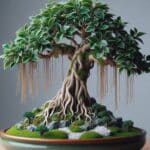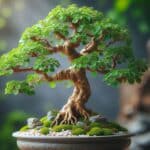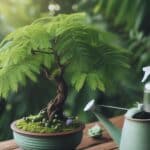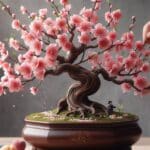It is rare to see a mangrove bonsai tree, but those few bonsai enthusiasts who managed to develop this type of tree are awed by the majestic appearance of this particular specimen.
Unlike most plant species, the mangrove can tolerate a lot of moisture and can make an ideal aquarium plant or can be a good specimen for a terrarium. You can plant the tree and other moisture-dependent species in an aquarium to create a fascinating swamp effect. Or you can combine your tree with vivid fish species to create a beautiful effect.
In certain places like Florida, it is illegal to plant a mangrove tree in the ground, but in many areas, you won’t be penalized as long as the tree is kept in a container. Because of these restrictions, you should check local regulations to ensure you stay safe within the law.
If you can safely and legally grow this type of tree, you can continue reading because we will show you exactly how to grow this excellent type of bonsai tree.
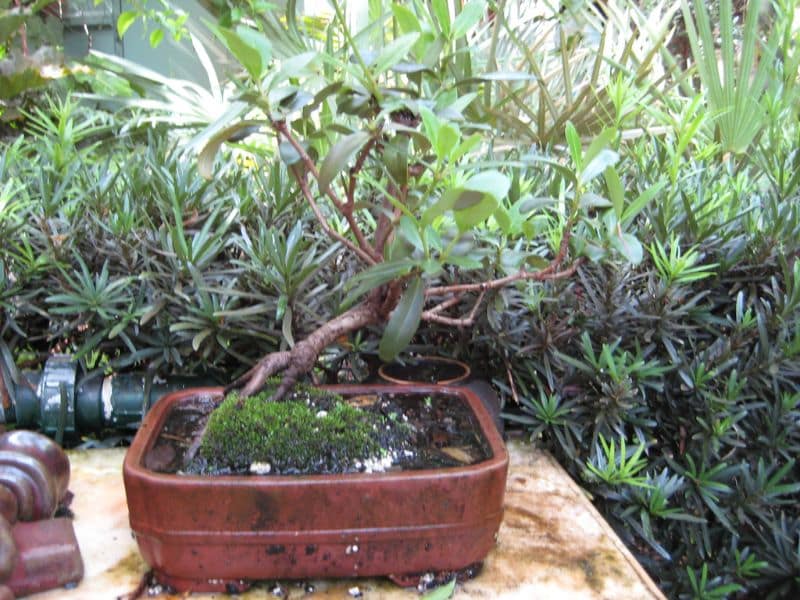
Plant Facts
| Scientific name | Rhizophora mangle |
| Common names | Red mangrove, white mangrove, black mangrove, mangrove, mangrove bonsai, mangala tree |
| Family | Rhizophoraceae |
| Plant Type | Tree |
| Height and Width | Over 30 ft. tall (natural), 12 inches tall (bonsai) |
| Origin | Atlantic coast |
| Flower colors | Yellow bell-shaped blooms |
| Foliage color | Light to dark green |
| Sun Exposure | 6000 – 8000 Kelvin aquarium light or partial sun |
| Soil Type & pH | Soft, muddy anaerobic soil with little oxygen. Can be planted in freshwater |
| Special features | Can grow in shallow water, produces aerial roots, grows well in salty water |
What Does a Bonsai Mangrove Tree Look Like
Mangrove trees produce large leaves of about 2 – 6 inches long with an oval or elliptic shape—the thick leaves with their leathery surface range from light to dark green.
This tree can also produce yellow bell-shaped flowers and is known to develop areal roots and branches.
The most significant feature of this tree is its ability to grow directly in the water. Bonsai artists often use this tree species to create interesting terrariums, and it is one of the few species that can be used to create an aquarium bonsai.
Where to Grow a Mongrove Tree Bonsai
Mangrove bonsai trees prefer tropical climates and should be protected from the frost. They are planted inside fresh or light salty waters. A 50% freshwater and 50% saltwater ratio is best for these trees.
You can plant this type of miniature inside an aquarium or position it in a terrarium. It can also be successfully grown in a bonsai pot if watered daily.
If kept indoors, the tree must be kept underneath growth lights with a 6000 – 8000 Kelvin strength or placed in a sunny window with lots of indirect light.
How to Grow a Mangrove Bonsai
Bonsai keepers have a tough time growing this type of tree because its growing conditions are unique. These trees can also be difficult to maintain since you must change the water frequently.
Here are the steps for growing this type of tree.
Propagation
This type of tree species has a very unique propagation method. Unlike most plants that transplant via dormant seeds, the mangrove is viviparous and brings life to living young.
The trees naturally propagate by dispensing propagules into the water. This propagule is attached to the parent tree but will eventually drop off into the water and continue developing into a tree if it reaches favorable conditions.
To grow your mangrove, you must first find one of these propagules and keep it in favorable conditions until it roots and grows.
Soil
This type of tree naturally grows in muddy soil, and its roots don’t need a lot of oxygen to survive. If you are planting it in an aquarium, you must place it in sand and gravel.
Pruning
Mangrove bonsai trees need to be pruned to keep them small. You can start by topping off the tree to encourage branching. The growth tips of these branches can also be clipped off to promote even more branching.
When you are pruning your tree, you should also remove about one-third of the foliage. It is best to start with overly large leaves since the foliage of this plant is a bit large.
Repotting and Transplanting
These trees should be repotted every 3 – 5 years. When you are repotting this bonsai, you should prune about one-third of its root system. Take care to remove dead or damaged roots first.
When you are done pruning the tree, you can plant it in an aquarium or container.
It is usually best to plant this tree in 2 – 3 inches of sand with a 1-inch top layer of aquarium gravel.
How to Care for a Mangala Bonsai Tree
Mangrove bonsai pets require a lot of care and maintenance to keep them in good health. Let’s look at how to care for this type of miniature tree.
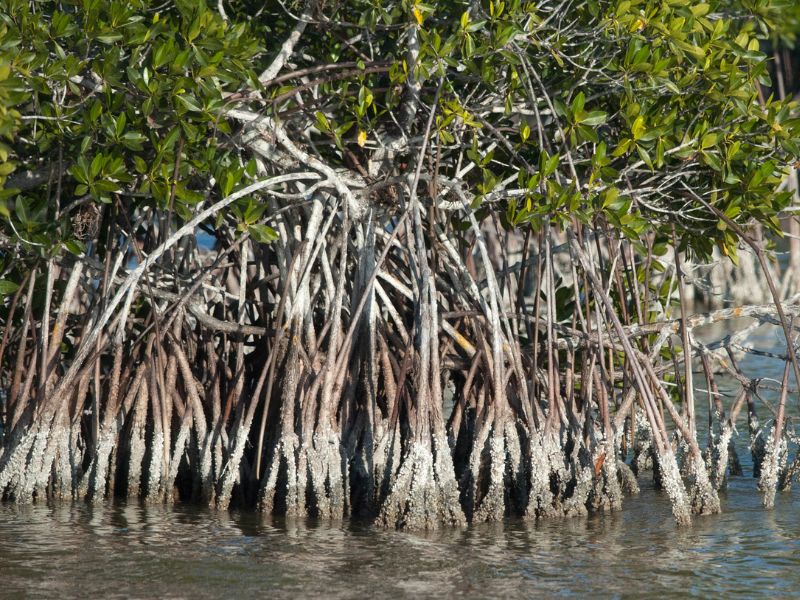
Water
These trees grow directly in shallow waters. Because of this, you will need to fill the aquarium or bonsai pot with a bit of water.
Mangrove trees grow well in freshwater but standing waters in small containers can sometimes start to rot. Because of this, you will need to filter the water or replace it regularly.
Sunlight
The small trees need lots of indirect light to grow well, and they can also develop well in partial shade. You can keep your aquarium or terrarium in a sunny window with lots of indirect light throughout the day. However, this sometimes causes algae to start growing in the tank.
If you have a tough time controlling the algae levels, you will need to add some artificial UV light with the help of aquarium lights.
Temperature and Humidity
These tropical trees are not cold-tolerant and should be protected during the winter. They can handle a lot of humidity and warmth.
A glass aquarium or terrarium should naturally increase the humidity levels for your little tree but you can also moisten the foliage daily to help the tree flourish.
Fertilizer
The best way to keep a mangrove bonsai healthy is by adding lots of nutrients to the water. You can supplement the tree weekly with water that is rich in iron, manganese, and potassium.
Common Varieties and Cultivars
There are three main species of mangrove tree which include the red mangrove (Rhizophora mangle), white mangrove (Laguncularia racemmosa), and black mangrove (Avicennia germinans).
Conclusion
A mangrove bonsai might be a challenge to care for, but it is one of the best plants to use if you want an aquarium bonsai tree.
This plant can tolerate up to 100 times more salt than most plant species and can look rather impressive if established in the water.
The mangrove bonsai is one of the most interesting specimens you can add to your bonsai collection. Growing and developing this type of bonsai can be quite a journey.
If you decide to grow a mangrove bonsai, we wish you the best of luck. We hope you will have lots of fun creating your beautiful water feature.



